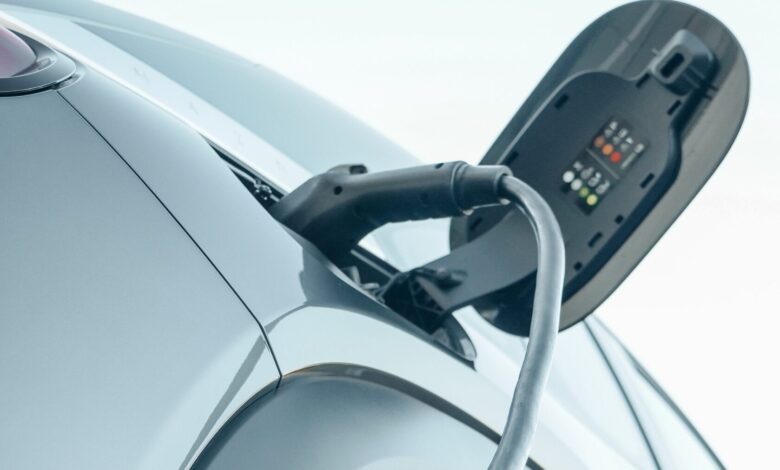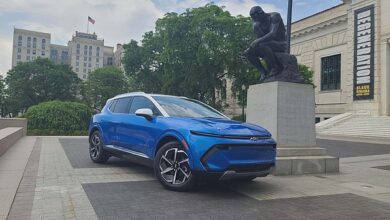Three big trends shaping the future of EV fleet management

Terri Stiffler, Vice President, Customer Success at ACERTUS brings a view of EV fleet management from the US and highlights three current major trends that are shaping the up-take of electric vehicles.
The EV market in the U.S. is going through a moment of upheaval and uncertainty. Electric vehicle (EV) sales growth slowed considerably in Q1 2024, according to data analysis from Cox Automotive. Although Q1 2024 EV sales increased 2.6% year over year, they declined by 15.2% compared to Q4 2023, marking the first quarter-over-quarter downturn since Q2 2020. And EV market share of total new-vehicle sales was only 7.3% in Q1 2024, down from Q4 2023.
EV makers have been slashing their prices, following the lead of Tesla (which also recently laid off the entire team in charge of the Tesla Supercharger network). Some EV startups like Rivian and Lucid are spending significant dollars due to Tesla’s price war and lagging consumer demand for EVs. And EV charging infrastructure is a point of contention among U.S. car buyers, who worry that lack of access to fast, reliable public EV chargers could cause them to run out of battery at the worst possible moments.
But despite these speed bumps, the path to a more fully electrified U.S. vehicle market is clear – and fleet managers are leading the way. Fleet managers are adopting electric vehicles more rapidly than the general car buying public. Although some consumers still have “range anxiety” about EV batteries, fleet owners see the business benefits of saving money on fuel and maintenance.
Let’s look at a few big-picture trends that are emerging in EV development in the U.S. market, and what it could mean for your company’s fleet.
- Commercial EVs are picking up slack in EV demand
One of the iconic legacy brands of the American auto industry, Ford Motor Co. recently announced that it is losing more than US$100,000 per electric vehicle due to decreased demand for EVs. But Ford’s commercial EV sales are becoming a bright spot for the U.S. EV market overall. Even if consumers are pulling back on EV purchases for now, fleet managers are showing strong interest in electrifying their fleets.
According to April 2024 reporting from Bloomberg, Ford Pro, the Ford commercial sales unit, achieved 12.7% earnings before interest and taxes (EBIT) profit margin for 2023. And Ford Pro is expected to become Ford’s most profitable division in 2024, selling more work trucks and vans in America than any other auto manufacturer. Ford Pro’s electric work vehicles include electric pickup trucks and electric transport vans.
One company that is getting on board with EV adoption is Ecolab, a global leader in safety and sustainability solutions for water, hygiene, and infection prevention. Ecolab recently announced its purchase of more than 1,000 Ford F-150 Lightning Pro electric trucks and Ford Mustang Mach-E electric SUVs. The company intends to electrify its entire North American fleet of more than 10,000 light-duty vehicles by 2030. According to Bloomberg, Ecolab expects its EV fleet vehicles to achieve a 50% reduction in fuel costs and 20% increase of time in service.
Along with the fuel and maintenance cost savings, U.S. fleet operators can also qualify for tax credits of up to $7,500 for qualified commercial electric vehicles.
-
Fleet managers are “taking charge” of EV infrastructure
U.S. electric vehicle charging infrastructure is a persistent challenge for EV adoption. If consumers fear that they can’t charge their cars easily and quickly, they’ll be less likely to buy EVs. But if not enough people buy EVs, it gets harder to keep EV charging stations profitable and in business.
Although EV “range anxiety” is still justified for many Americans who live in small towns and rural areas, America’s EV charging infrastructure is quickly getting better. Recent Bloomberg analysis found that America built almost 1,100 new public fast-charging stations in the last six months of 2023 – an increase of 16%. The National Electric Vehicle Formula Infrastructure (NEVI) program is on track to spend $5 billion to create public fast-charging stations every 50 miles (80 km) on major U.S. highways.
But fleet managers can’t afford to wait for America’s public EV infrastructure to catch up with their needs. Instead, many companies are building their own EV charging stations. One prominent example is retail giant Amazon, which uses Rivian electric vans for last-mile delivery of its customers’ package shipments. According to Bloomberg, in the past two years Amazon has installed more than 17,000 EV chargers at over 100 warehouses throughout the U.S. – making Amazon the largest operator of private EV charging infrastructure in America.
EV adoption is not just for big corporations. Smaller businesses are also getting into the EV infrastructure game. Elite Home Care (EHC) is a small company in South Carolina that provides on-site and in-home care for seniors and people with disabilities, and providing transportation is a much-needed service for these communities. EHC worked with Ford Pro to introduce electric Ford E-Transit vans and EV charging solutions. The EHC team says that their company has 100 EV chargers at the company’s depot, and has achieved nearly $6,500 in annual savings per electric vehicle (including fuel, service, and other operating costs).
- Companies need a new focus on EV logistics
Even if your company is all-in on EVs, the complexities of EV logistics require a new level of focus and expertise. Choosing the right logistics partner can help fleet operators get the best performance and maximum value from their electric vehicle fleets.
Here are a few ways that better EV logistics can add value for fleet managers:
Efficient EV transport: Because EV batteries are so heavy, fewer EVs are allowed to be carried on a standard 9-car hauler. This makes it important to efficiently find extra capacity (“spots on the truck”) where your EV inventory can get shipped – on time and on budget.
Optimal EV battery charging: During transport, EV batteries can typically lose about 4% of their charge per day. A key challenge of EV logistics involves providing adequate volume of charging stations at storage and distribution hubs, and making sure the vehicle batteries are charged to optimal range (20-80% charging range) prior to transport and upon delivery.
EV storage: A good EV logistics partner will help protect your vehicles from extreme temperatures (too cold or too hot) that can hurt your EV’s performance or damage your battery.
EV incentives and compliance: The U.S. federal government is offering a wide range of EV tax credits, EV charger tax credits, and other incentives for fleet owners to adopt commercial electric vehicles. EV logistics partners can help fleet managers navigate their options for EV incentives and maintain compliance with commercial EV regulations.
The landscape of EV adoption in the U.S. is going through growing pains, but the future is bright. Commercial fleet operators are already seeing significant cost savings by adopting electric vehicles, and the business case for EVs is likely to get even stronger as EV prices continue to decline, and as public charging infrastructure becomes more accessible. Don’t feel like your company has to wait to get on board with EV adoption. With help from the right logistics partner, you can make better-informed choices to embrace the opportunities of EVs for your fleet today.
Author: Terri Stiffler, Vice President, Customer Success at ACERTUS



